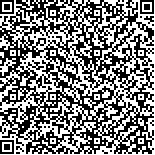Archive > Volume 44 Issue 6 > 2018,44(6):725-736. DOI:10.7519/j.issn.1000-0526.2018.06.001 Prev Next
Current Status of SatelliteBased Dust Aerosol Remote Sensing and Some Issues to Be Concerned
- Article
- Figures
- Metrics
- Preview PDF
- Reference
- Related
- Cited by
- Materials
Abstract:
Dust storm is a typical weather disaster which outbreaks in arid and semi-arid areas globally. The dust aerosol generated from dust storm dominates the aerosol loading in the troposphere and has comprehensive impacts on the global environment, weather, climate and ecology. As a kind of absorbing aerosol, dust aerosol has strong absorption on the incoming solar radiation. Dust aerosol can affect the climate through the semi-direct effect, such as heating the atmosphere, changing the atmospheric stability, evaporating the cloud droplet and reducing the cloud amount. Satellite remote sensing has showed special priority on dust monitoring and has become an indispensable way for dust aerosol study. The main satellite-based dust aerosol remote sensing methods are summarized in this paper as the visible-infrared method, thermal infrared method, microwave method, ultraviolet method and active lidar-based method. In addition, typical instruments and products are introduced, and the accuracy of products and the validation by ground-based remote sensing network are discussed. Based on the radiation transfer theory, the visible-infrared and thermal infrared radiance observed by satellite are simulated. Moreover, the effect of surface albedo and the channel selection issue are discussed for the visible remote sensing and thermal infrared hyperspectral remote sensing separately. Finally, some prospects in the future study for the satellite-based dust aerosol remote sensing are presented.
Keywords:
Project Supported:
Clc Number:


Mobile website









